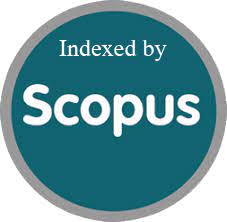Deep Learning for Plant Species Classification
DOI:
https://doi.org/10.63682/jns.v14i15S.3437Keywords:
Plant species classification, Image recognition, Convolutional neural networks (CNN), Botanical research, Agriculture, Environmental conservation, Plant identificationAbstract
Classifying plant species is an important effort in agriculture, environmental conservation, and botanical study. This research presents a novel method for precise and effective plant species classification that makes use of deep learning techniques. Convolutional neural networks (CNNs), a subclass of deep learning models well-known for their performance in image identification tasks, are a key component of the suggested approach. A sizable collection of photos of different plant species taken in a range of growth phases and environmental circumstances is used to train the system. To improve the model's resilience to changes in image quality and appearance, a variety of preprocessing methods, such as image normalisation, augmentation, and noise reduction, are used. Test results show that the suggested deep learning strategy outperforms manually generated feature-based approaches and conventional machine learning techniques in the classification of plant species. High accuracy rates are attained by the CNN-based model in a variety of plant species, demonstrating its good generalisation to new data and handling of intricate botanical features. Additionally, the method is efficient and scalable, which makes it appropriate for real-world applications involving the large-scale classification of plant species. This research advances agricultural practices, biodiversity monitoring, and botanical research by automating the process of species identification. This ultimately makes it easier to manage plant resources sustainably and support environmental conservation initiatives
Downloads
Metrics
References
Aanis Ahmad, Dharmendra Saraswat, Aly El Gamal. (2023). A survey on using deep learning techniques for plant disease diagnosis and recommendations for development of appropriate tools, Smart Agricultural Technology, 3, 100083
Anubha Pearline, S., Sathiesh Kumar, V., & Harini, S. (2019). A study on plant recognition using conventional image processing and deep learning approaches. Journal of Intelligent & Fuzzy Systems, 36(3), 1997-2004.
Basavaraj S. Anami, Suvarna S. Nandyal, A. Govardhan. (2010). A Combined Color, Texture and Edge Features Based Approach for Identification and Classification of Indian Medicinal Plants. International Journal of Computer Applications. 6, (12), 45-51.
Bondre, S., & Yadav, U. (2022). Automated flower species identification by using deep convolution neural network. In Intelligent Data Engineering and Analytics: Proceedings of the 9th International Conference on Frontiers in Intelligent Computing: Theory and Applications (FICTA 2021) (pp. 1-10). Singapore: Springer Nature Singapore.
Cope, J.S., Remagnino, P., Barman, S., Wilkin, P. (2010). The Extraction of Venation from Leaf Images by Evolved Vein Classifiers and Ant Colony Algorithms. In: Blanc-Talon, J., Bone, D., Philips, W., Popescu, D., Scheunders, P. (eds) Advanced Concepts for Intelligent Vision Systems. ACIVS 2010. Lecture Notes in Computer Science, vol 6474. Springer, Berlin, Heidelberg.
Dyrmann, M., Karstoft, H., & Midtiby, H. S. (2016). Plant species classification using deep convolutional neural network. Biosystems engineering, 151, 72-80.
Grinblat, G. L., Uzal, L. C., Larese, M. G., & Granitto, P. M. (2016). Deep learning for plant identification using vein morphological patterns. Computers and electronics in agriculture, 127, 418-424.
Huixian, J. (2020). The analysis of plants image recognition based on deep learning and artificial neural network. IEEE Access, 8, 68828-68841.
Kadir, A., Nugroho, L. E., Susanto, A., & Santosa, P. I. (2013). Neural network application on foliage plant identification. arXiv preprint arXiv:1311.5829.[10] Kanda, P. S., Xia, K., & Sanusi, O. H. (2021). A deep learning-based recognition technique for plant leaf classification. IEEE Access, 9, 162590-162613.
Larese, M. G., Craviotto, R. M., Arango, M. R., Gallo, C., & Granitto, P. M. (2012). Legume identification by leaf vein images classification. In Progress in Pattern Recognition, Image Analysis, Computer Vision, and Applications: 17th Iberoamerican Congress, CIARP 2012, Buenos Aires, Argentina, September 3-6, 2012. Proceedings 17 (pp. 447-454). Springer Berlin Heidelberg.
Lee, S. H., Chan, C. S., Wilkin, P., & Remagnino, P. (2015). Deep-plant: Plant identification with convolutional neural networks. In 2015 IEEE international conference on image processing (ICIP) (pp. 452-456). IEEE.
Lee, S. H., Chang, Y. L., Chan, C. S., & Remagnino, P. (2016). Plant Identification System based on a Convolutional Neural Network for the LifeClef 2016 Plant Classification Task. CLEF (Working Notes), 1, 502-510.
Lin, T. Y., Dollár, P., Girshick, R., He, K., Hariharan, B., & Belongie, S. (2017). Feature pyramid networks for object detection. In Proceedings of the IEEE conference on computer vision and pattern recognition (pp. 2117-2125).
Saini, G., Khamparia, A., & Luhach, A. K. (2020). Classification of plants using convolutional neural network. In First International Conference on Sustainable Technologies for Computational Intelligence: Proceedings of ICTSCI 2019 (pp. 551-561). Springer Singapore.
Sladojevic, S., Arsenovic, M., Anderla, A., Culibrk, D., & Stefanovic, D. (2016). Deep neural networks-based recognition of plant diseases by leaf image classification. Computational Intelligence and Neuroscience, 2016, 3289801.
Sulc, M., & Matas, J. (2015). Texture-based leaf identification. In Computer Vision-ECCV 2014 Workshops: Zurich, Switzerland, September 6-7 and 12, 2014, Proceedings, Part IV 13 (pp. 185-200). Springer International Publishing.
Wei Tan, J., Chang, S. W., Abdul-Kareem, S., Yap, H. J., & Yong, K. T. (2018). Deep learning for plant species classification using leaf vein morphometric. IEEE/ACM transactions on computational biology and bioinformatics, 17(1), 82-90.
Downloads
Published
How to Cite
Issue
Section
License

This work is licensed under a Creative Commons Attribution 4.0 International License.
You are free to:
- Share — copy and redistribute the material in any medium or format
- Adapt — remix, transform, and build upon the material for any purpose, even commercially.
Terms:
- Attribution — You must give appropriate credit, provide a link to the license, and indicate if changes were made. You may do so in any reasonable manner, but not in any way that suggests the licensor endorses you or your use.
- No additional restrictions — You may not apply legal terms or technological measures that legally restrict others from doing anything the license permits.










